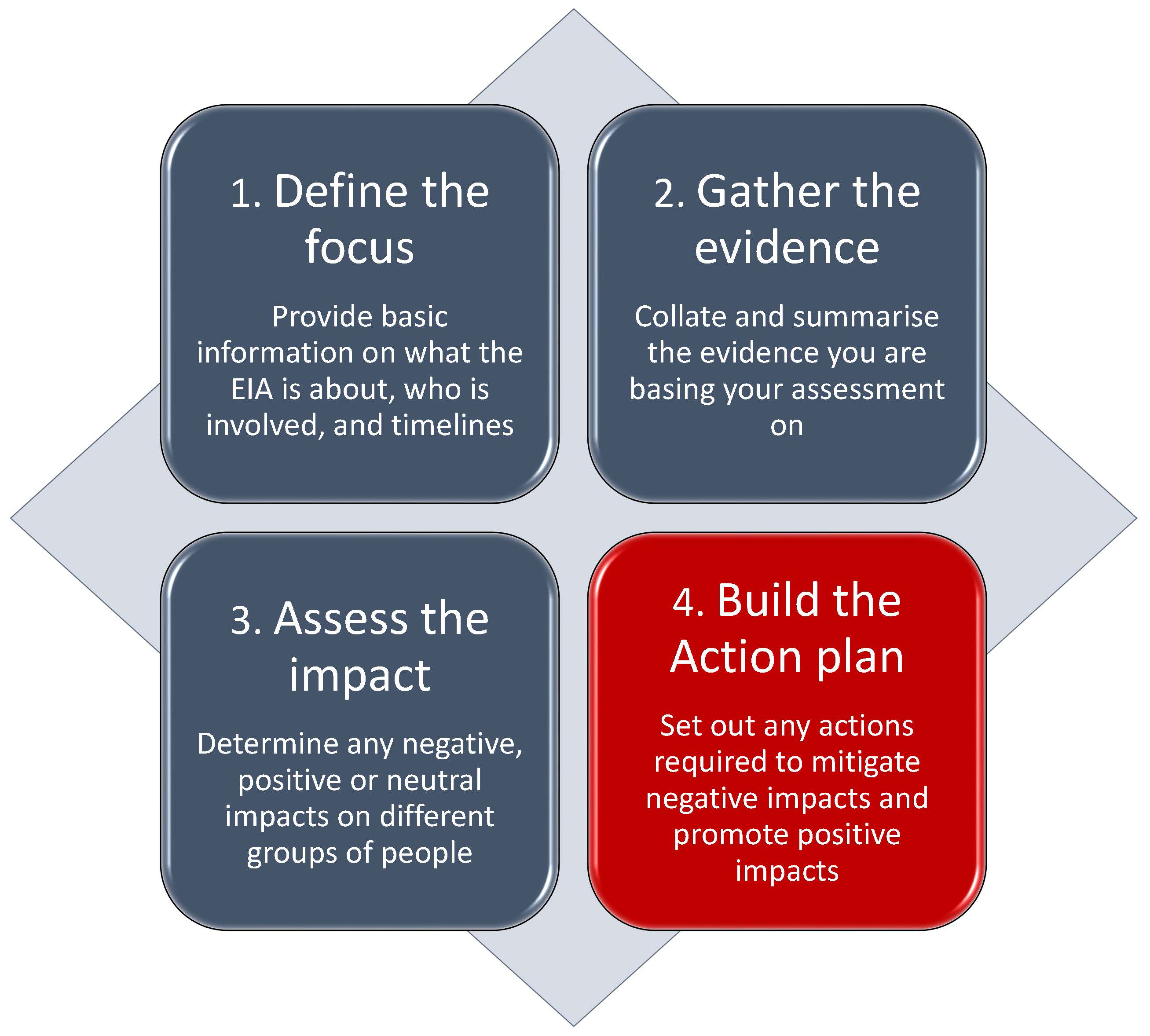EIA Stage 4: Build the action plan


In Stage 4 you will develop an action plan to mitigate against the impacts you identified in Stage 3. Your action plan should use SMART objectives, including clear action owners and review dates.
Depending on your EIA findings, actions may include:
- Actions to mitigate negative impacts
- Actions to enable positive impacts
- Actions to fill gaps in available evidence
- Actions to consult further with colleagues or students
The best actions are specific, measurable, achievable, relevant and timebound (SMART):
- Try to be as clear and targeted as you can rather than vague and high-level.
- Ensure actions spell out how you will do something. Using sub-actions to break actions into smaller steps can help with this.
- Add a deadline for each action and the person responsible.
- Setting a success measure will help you to measure progress later.
Your action plan should also outline how and when you will monitor actual impacts during implementation, and when you will next review the EIA. This may be at interim/mid-points during implementation, or at the next planned review point. When you have identified negative impacts, review should take place earlier than if you have not, and may be needed in advance of the next planned review date to check if your actions are working to alleviate negative impacts.
The frequency of reviewing the EIA should be proportionate to the scale and scope of the policy/process/activity. It is recommended, however, that EIAs should be revisited no longer than 3 years after the initial assessment.




